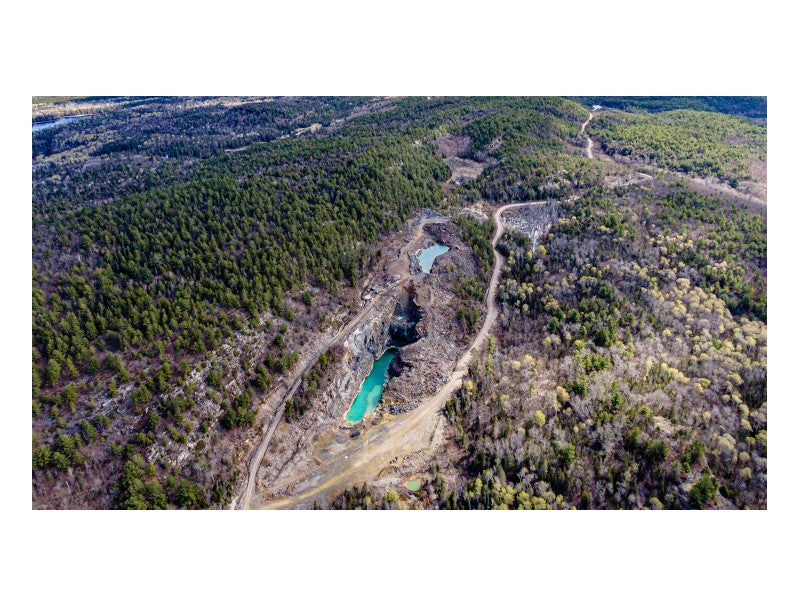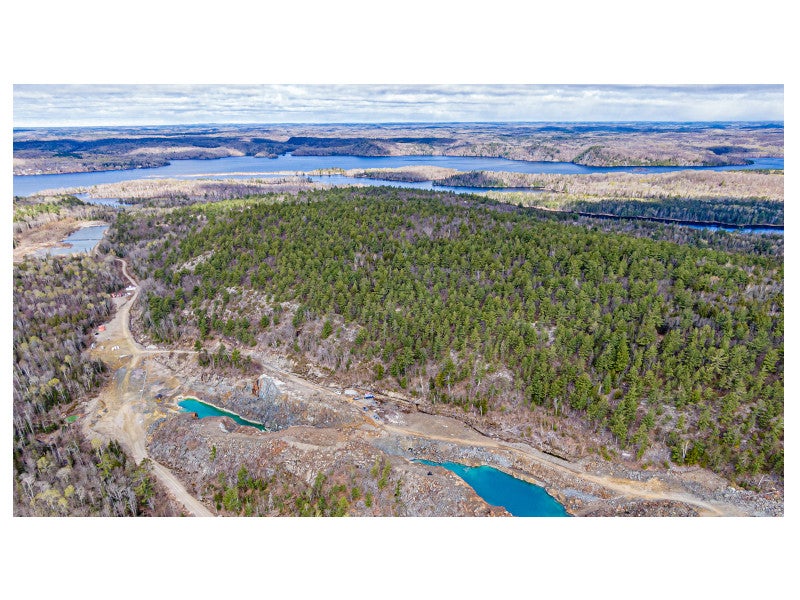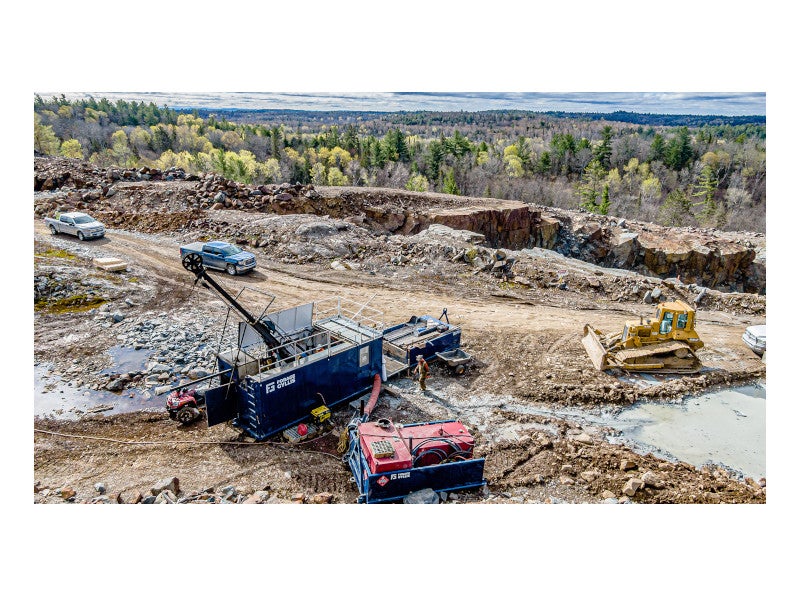The Shakespeare nickel project is a nickel, copper and PGM mine located 70km south-west of Sudbury, Ontario, Canada.
The mine is owned by Canadian exploration and development company Magna Mining. It was previously operated by Ursa Major, which was acquired by Magna in 2017.
Commercial production was accomplished between 2010 to 2012 through toll milling, with approximately 490,000t of ore sent to the Strathcona mill in Sudbury for processing. The mine was placed in care and maintenance by Ursa Major due to a decline in nickel prices.
Magna signed a non-binding memorandum of understanding (MoU) with Japan-based trading and investment company Mitsui & Co. in January 2022 to form a joint venture for the development of the Shakespeare mine. Mitsui will purchase a stake between 10% and 12.5% in the project for $8m-$10m, as part of the MoU.
The mine is estimated to produce 65.7 million pounds (Mlb) of nickel, 86.7Mlb of copper, 3Mlb of cobalt and 177,000oz of PGMs over a mine life of 7.1 years at an initial CAPEX of C$232.9m ($182.23m).
Location and geology of the Shakespeare nickel project
The Shakespeare nickel project lies in the Shakespeare township, near the Agnew Lake, about 70km west-southwest of Sudbury, Ontario.
The Shakespeare deposit is part of the Superior Province and the Southern Provinces. It comprises Archean-aged granitoids and gneisses intruded by the Early Proterozoic East Bull Lake and Agnew Lake intrusions of the Huronian Supergroup. The rocks are cut by mafic intrusions of Nipissing Diabase, Sudbury Breccia, and the Olivine Diabase dyke swarm.
Mineralisation and reserves of the nickel deposit
The Shakespeare deposit’s mineralisation mainly includes pyrrhotite, chalcopyrite, and pentlandite, with some pyrite. The mineralisation is divided into two units, including a high-grade blebby style of sulphide mineralisation located at the centre of the intrusion and a lower grade style of mineralisation.
The mineral zone has a maximum strike length of 1,700m and is located at a depth of 550m.
The proven and probable reserves of the Shakespeare nickel project are estimated at 11.87Mt grading 0.33% nickel, 0.35% copper, 0.36% palladium, 0.32% platinum, 0.18g/t gold and 0.02% cobalt, as of January 2022.
Mining and processing of the Shakespeare project
The Shakespeare project is planned to be developed as an open operation using conventional mining equipment including 12t-91t trucks, hydraulic excavators, wheel loaders, and drills. The average mining rate is expected to be 11.5 million tonnes per annum (Mtpa) during the first four years of operations, peaking at 11.9Mtpa in the fifth year and tapering off from the sixth year of operation until the end of mine life.
The processing facility for the Shakespeare project will be a standard crush/grind/float operation with a throughput of 4,500 tonnes per day (tpd) planned to be constructed next to the open pit.
The recovered ore will be dumped by mine haul trucks into a surge bin that feeds a main jaw crusher. The crushed ore will be transported to a semi-autogenous (SAG) mill, which includes a pebble crusher with a screen to achieve a transfer size of 1000µm. The screen underflow will be sent to a cyclone feed pump box to achieve a product size of 85µm.
The cyclone overflow will be sent to the flotation circuit conditioning tanks to recover a bulk sulphide concentrate and a nickel scavenger concentrate. The bulk rougher concentrate will go through one step of bulk cleaning and two phases of copper flotation before the final copper concentrate is recovered. The produced nickel scavenger concentrate will undergo three steps of cleaner flotation to recover the final nickel concentrate product.
The final copper and nickel concentrates will be thickened and filtered before being delivered to a smelter.
Near-term nickel production at the mine is planned to be achieved through a third-party mill.
Infrastructure details of the nickel deposit
The Shakespeare nickel project benefits from the existing mining infrastructure at the site. The site is easily accessible by road from the nearby Trans-Canada highway through an all-season access road, which will require minor upgrades.
The mine does not require any camp facilities due to its proximity to the neighbouring towns and the city of Sudbury.
Surface runoff collection inside the project footprint will supply the project’s water demand without the need to draw water from natural water bodies or reservoirs.
The project site can be connected to the hydroelectric power grid through 44kV overhead lines from existing 115kV grid lines positioned both north (4km) and south (6.5km) of the deposit. Substations with a capacity of 10MVA will be installed at the grid connection and at the end of the 44kV line.
Contractors involved
Exploration and development company AGP Mining prepared the technical report for the project, with contributions by SGS Canada (geological services), XPS Consulting and Testwork Services (metallurgical testing), Blue Coast Research (process engineering), SLR Consulting (geotechnical engineering), and Halyard (capital cost estimates).






